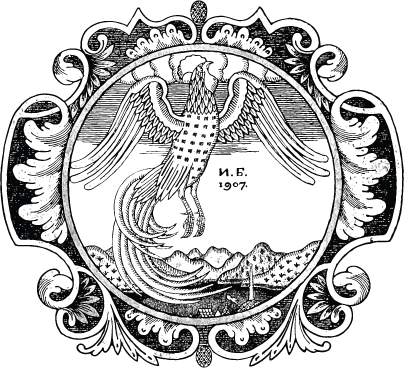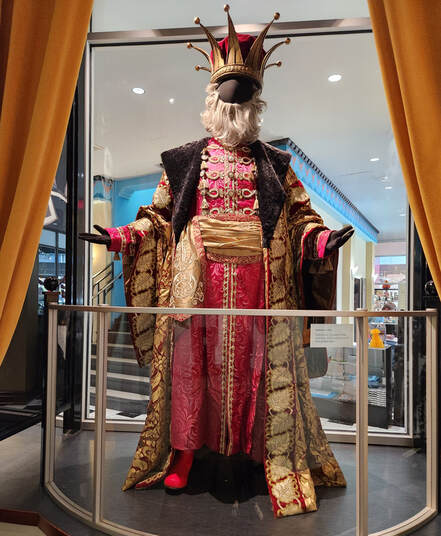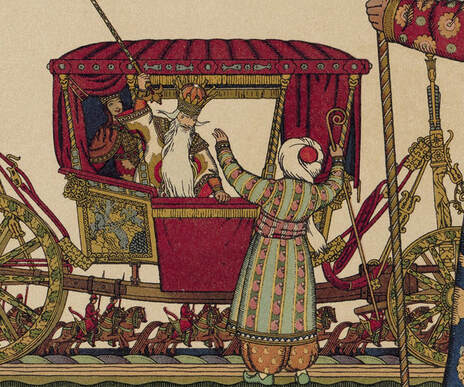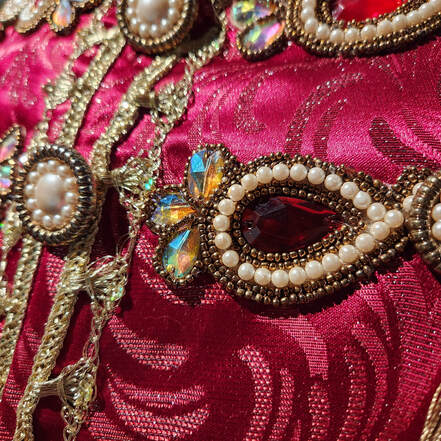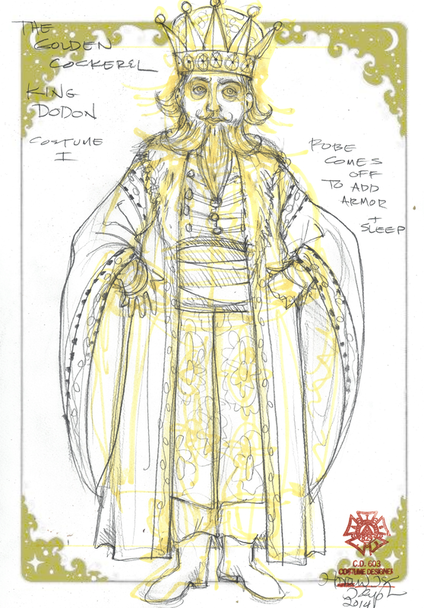Tsar Dodon
Designed by Howard Tsvi Kaplan
Collection of Sarasota Opera Association, Inc.
Collection of Sarasota Opera Association, Inc.
The Imperial Russian court, which officially came to an end following the revolution of 1917, was historically known around the world for its lavish palaces and treasure houses of art and fine objects. Although Tsar Dodon is a purely fictional creation, an amalgam of stereotypes of kingly wealth and power, he fits the imaginary model of a fairy-tale tsar.
For this costume, several historical references were used, including Ivan Bilibin’s illustrations for a publication of Pushkin’s poem (see the Objects Case), which were published in 1907. The crown is a particularly whimsical design influenced by Bilibin’s drawings.
This costume’s striking visual impact is achieved by layering multiple textures and patterns. A rich red damask is the backdrop for gold appliques, trims, and embellishments such as the braided button loops on the upper robe, and the red rhinestones that glint when catching the light.
This costume is made of several layers including undergarments, the red robe, and the outer robe with its faux fur collar. The performer would be padded with a body suit to give the figure royal bulk. Like so many opera costumes, the overall ensemble is extremely heavy. As Marilyn Horne has often said, an opera singer is not just a singer but an athlete.
Before work can begin on a costume, a designer must create a concept drawing of what they'd like the character to look like. Many hours of work go into creating stage costumes. Ultimately, there is a lot of input that goes into the final design from the performers, the director, and others.

